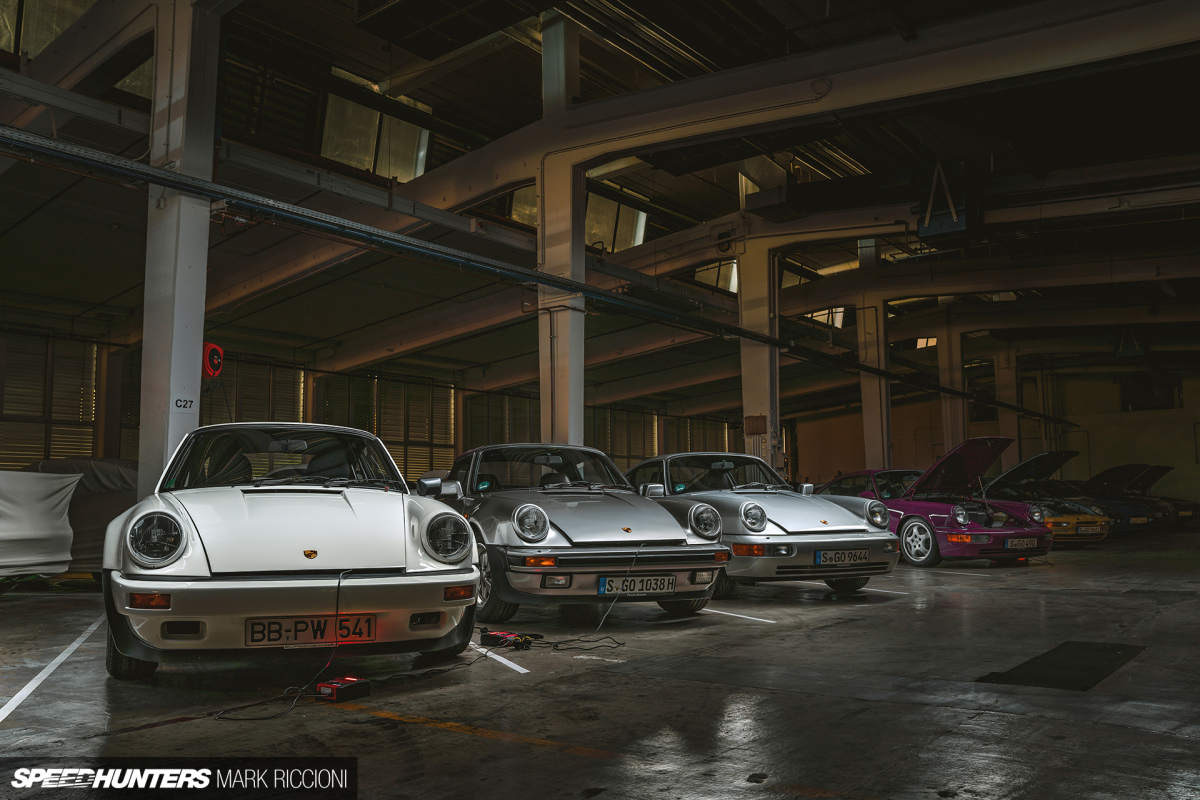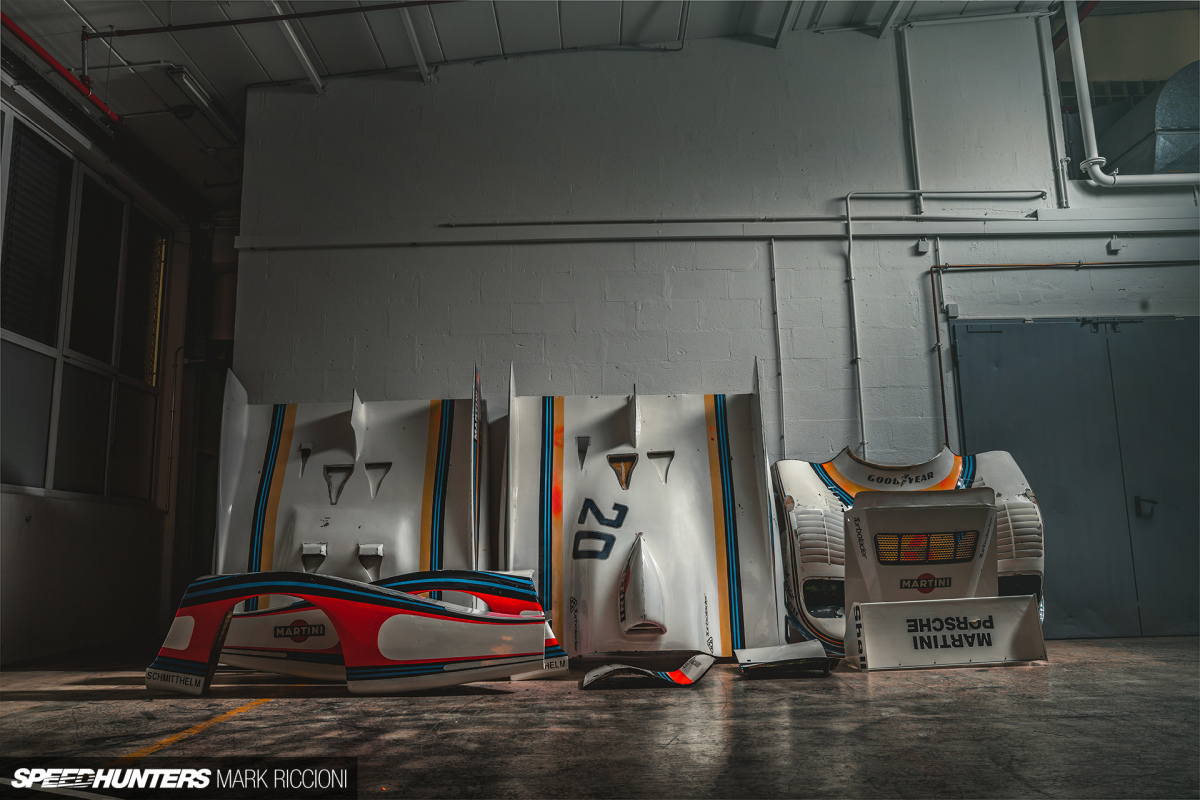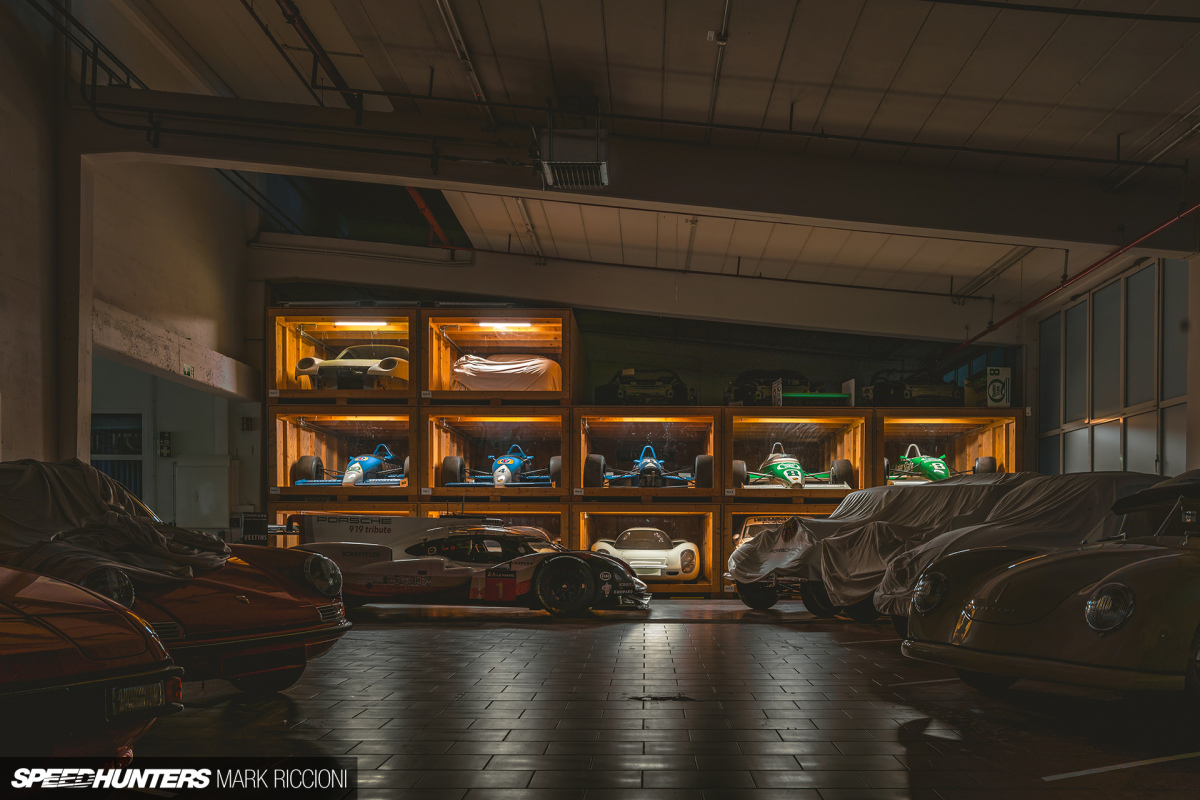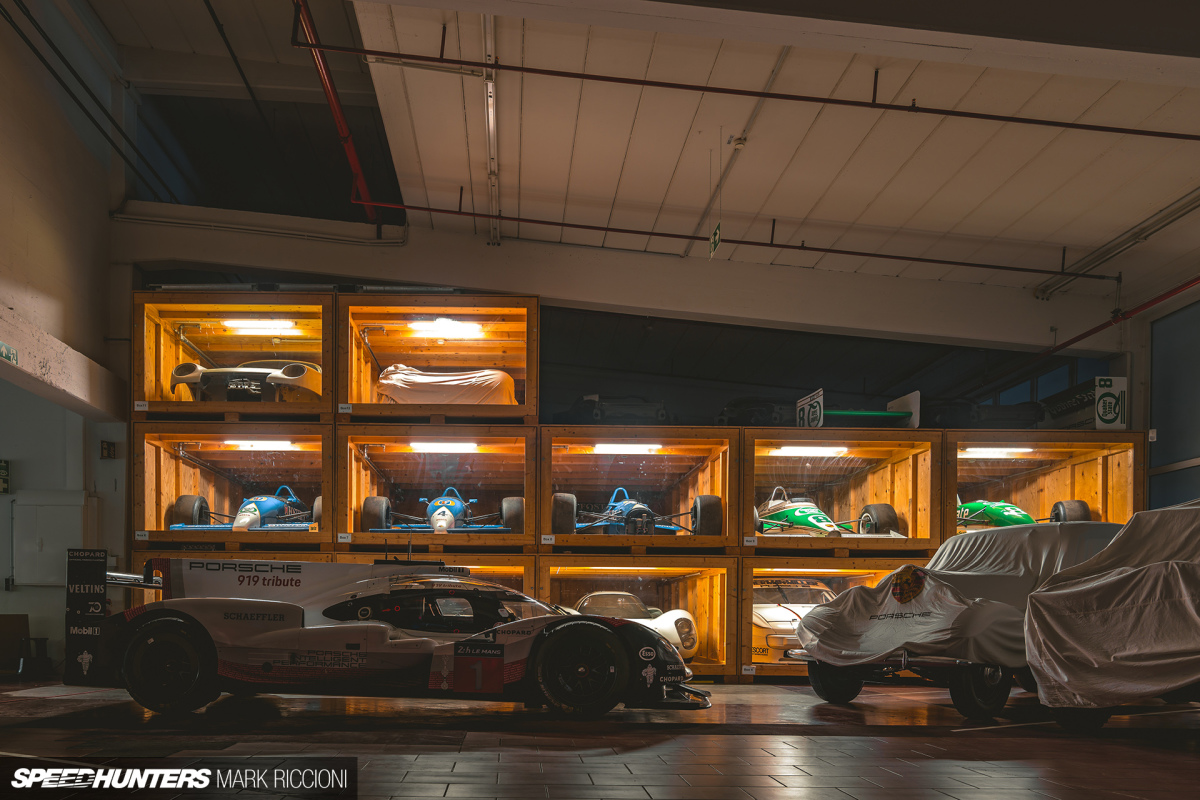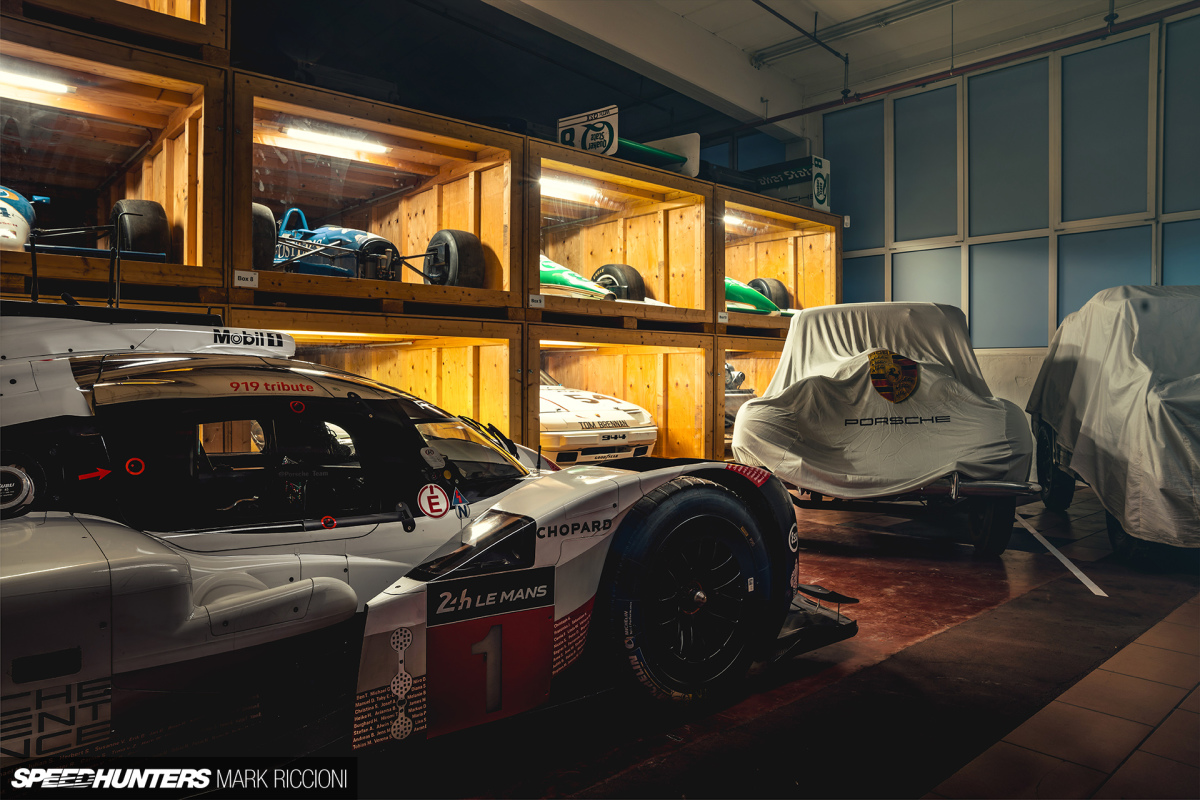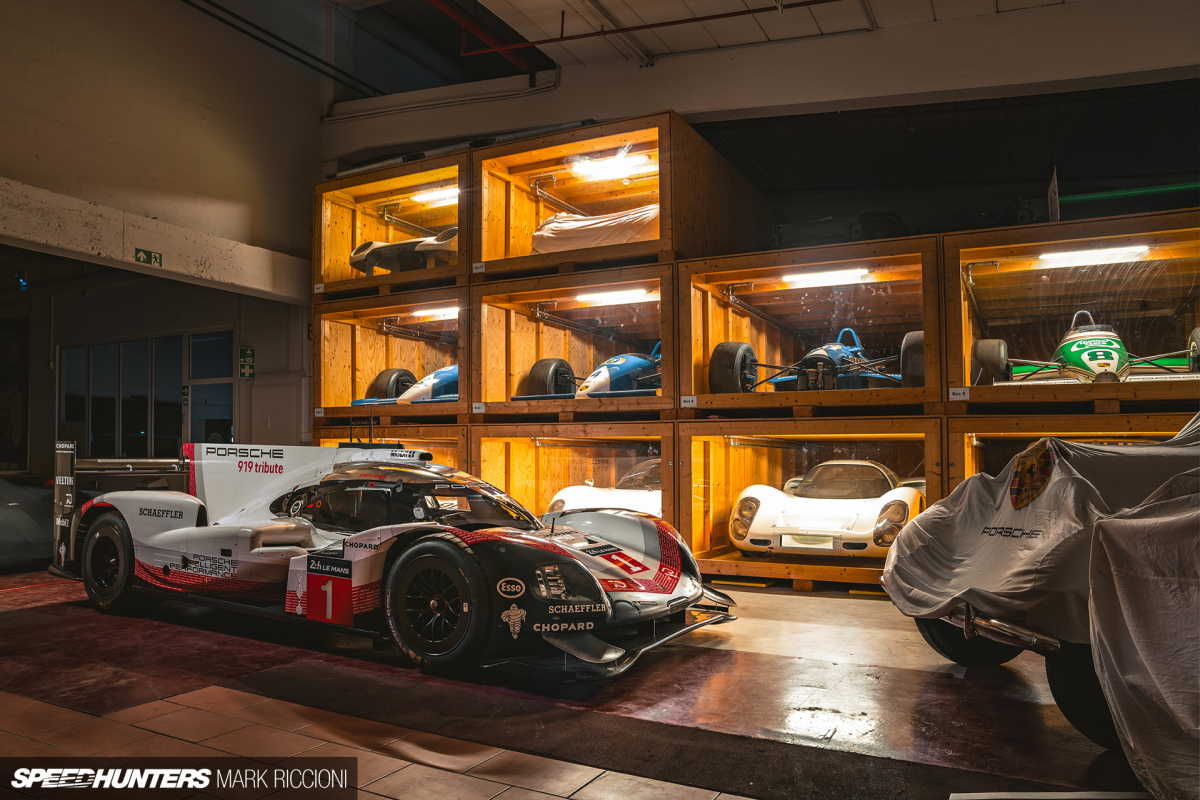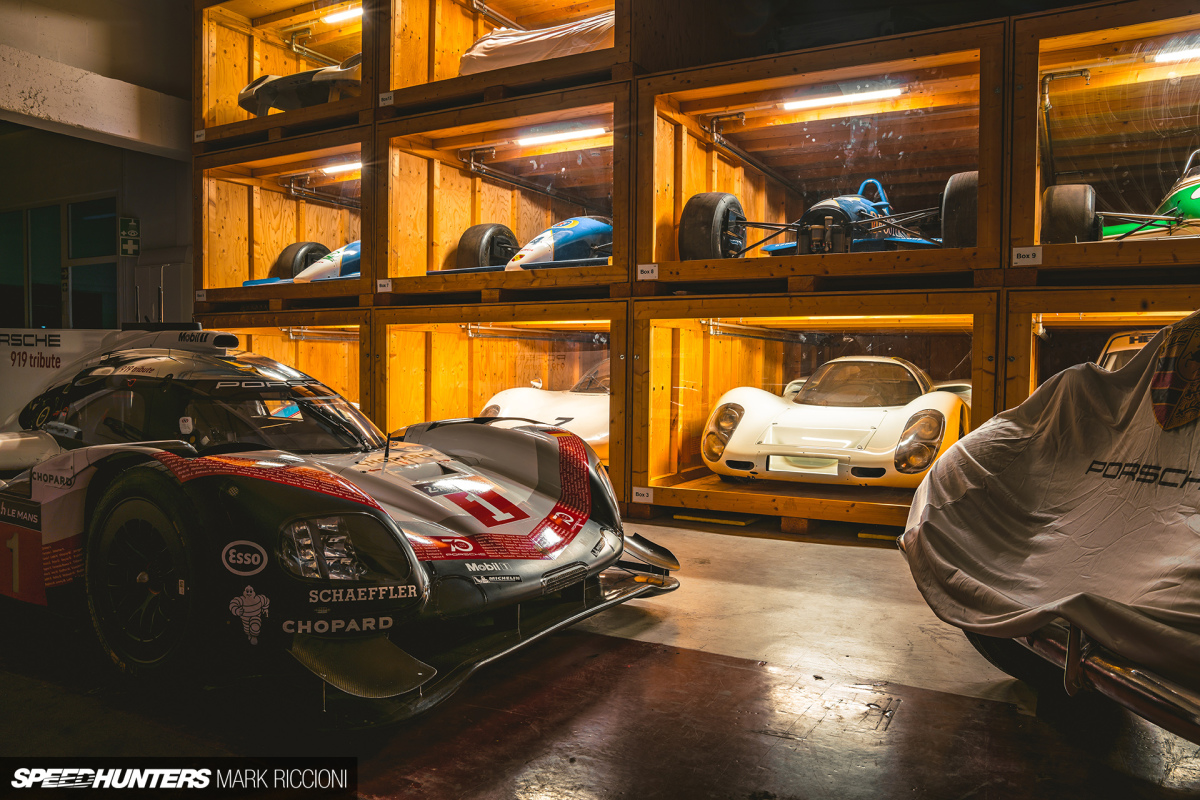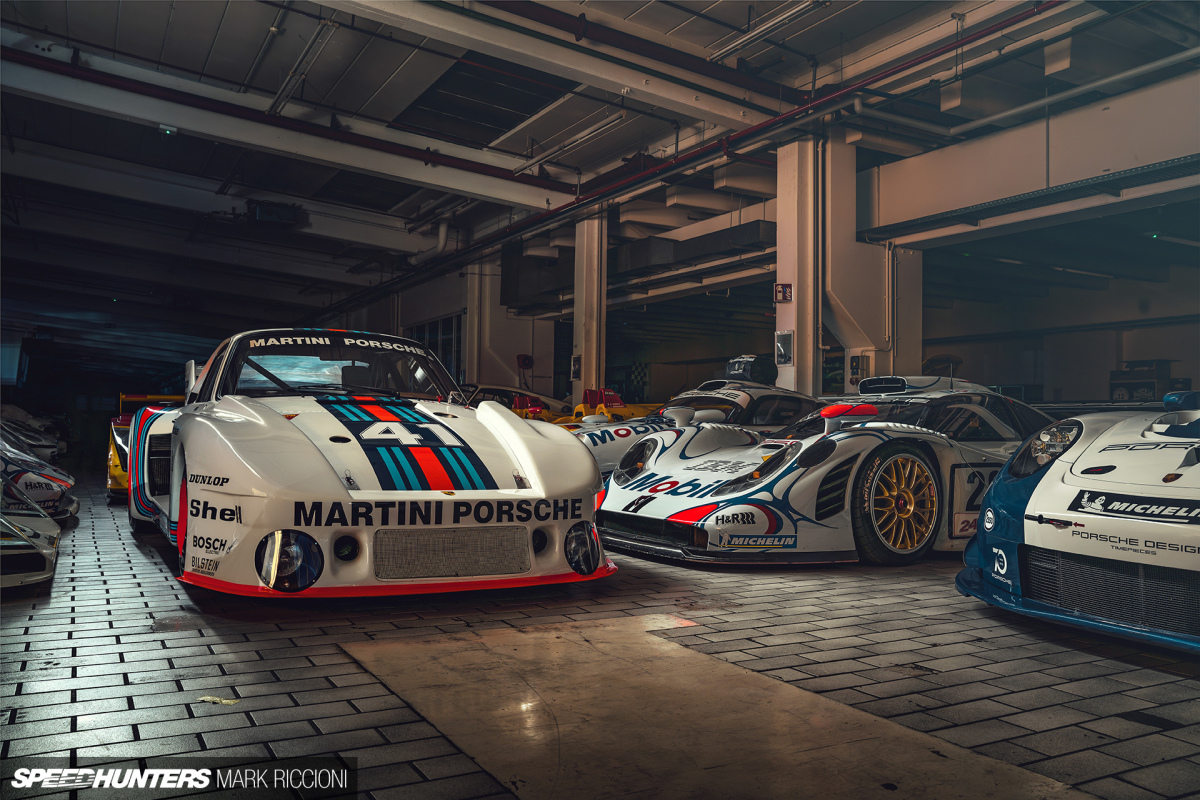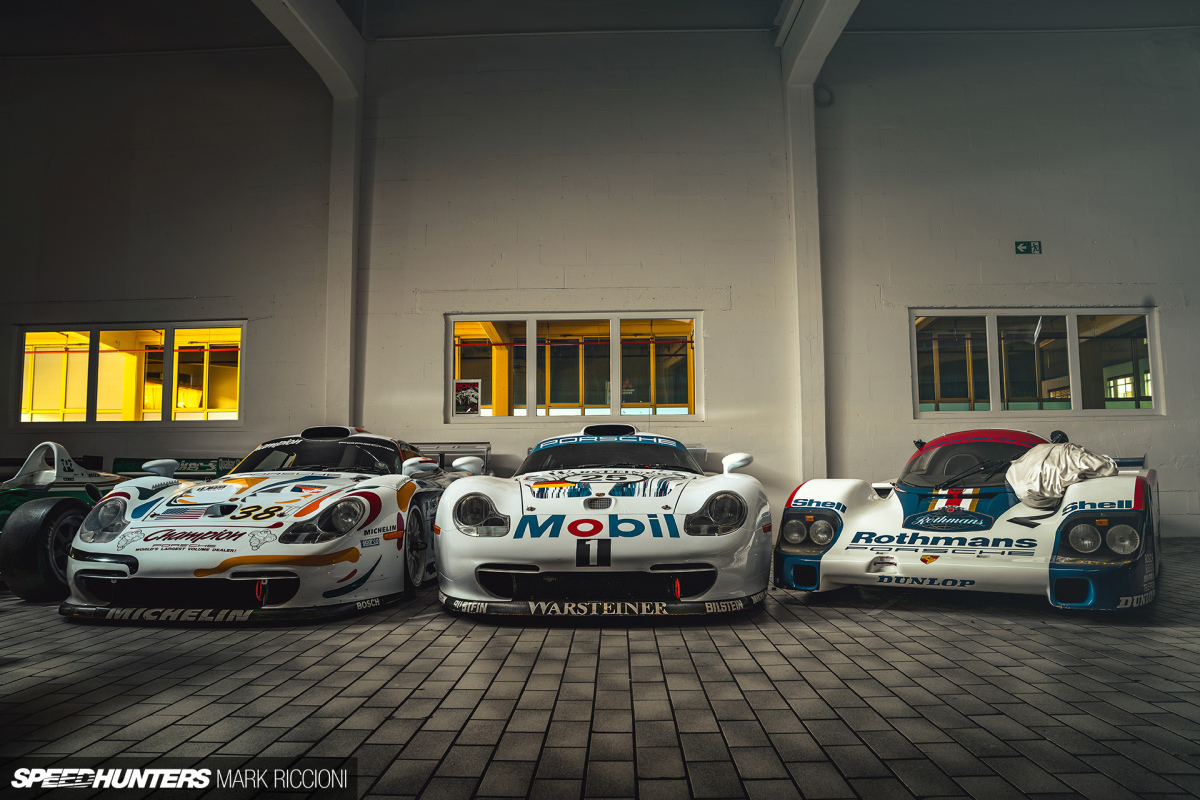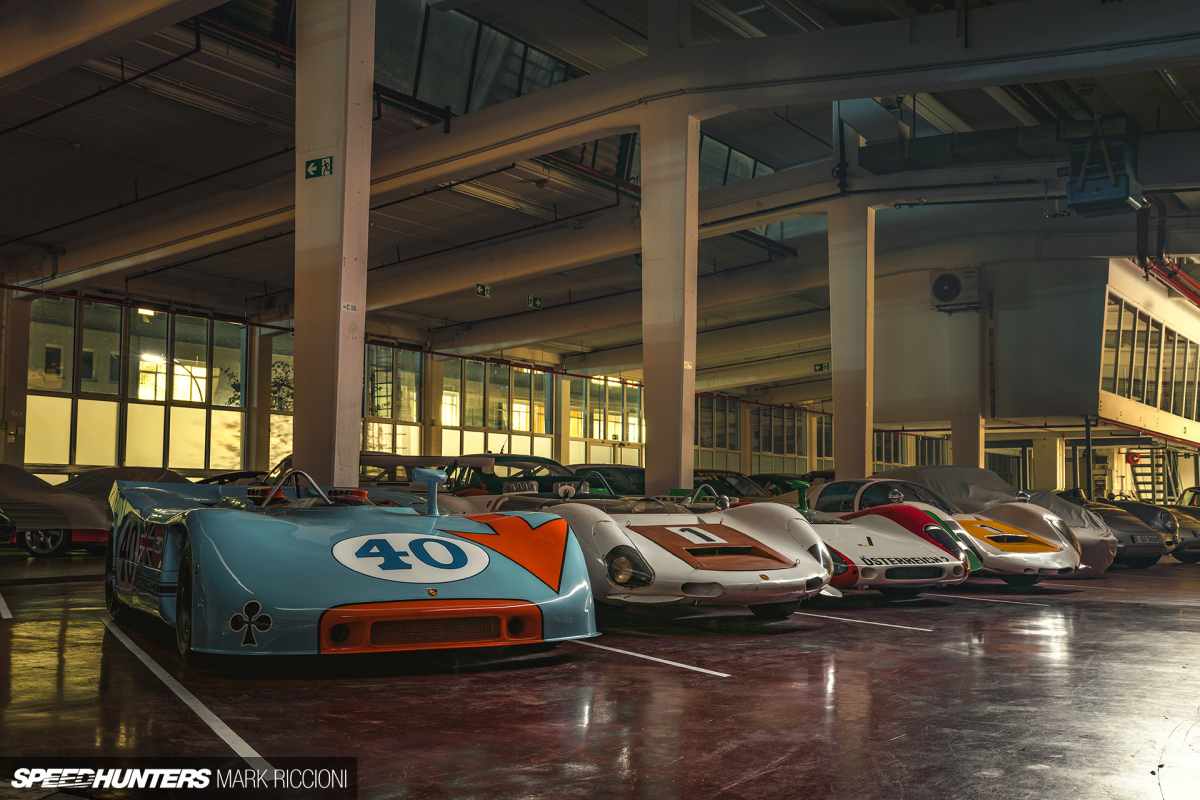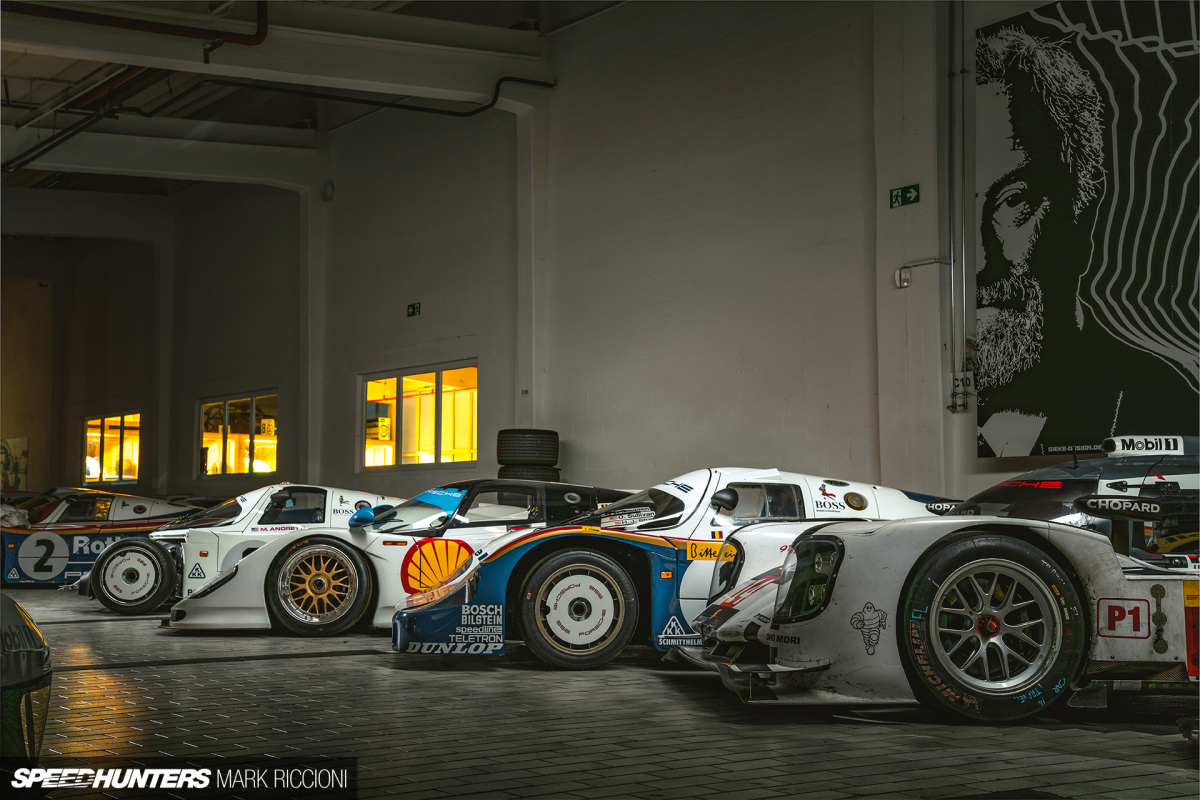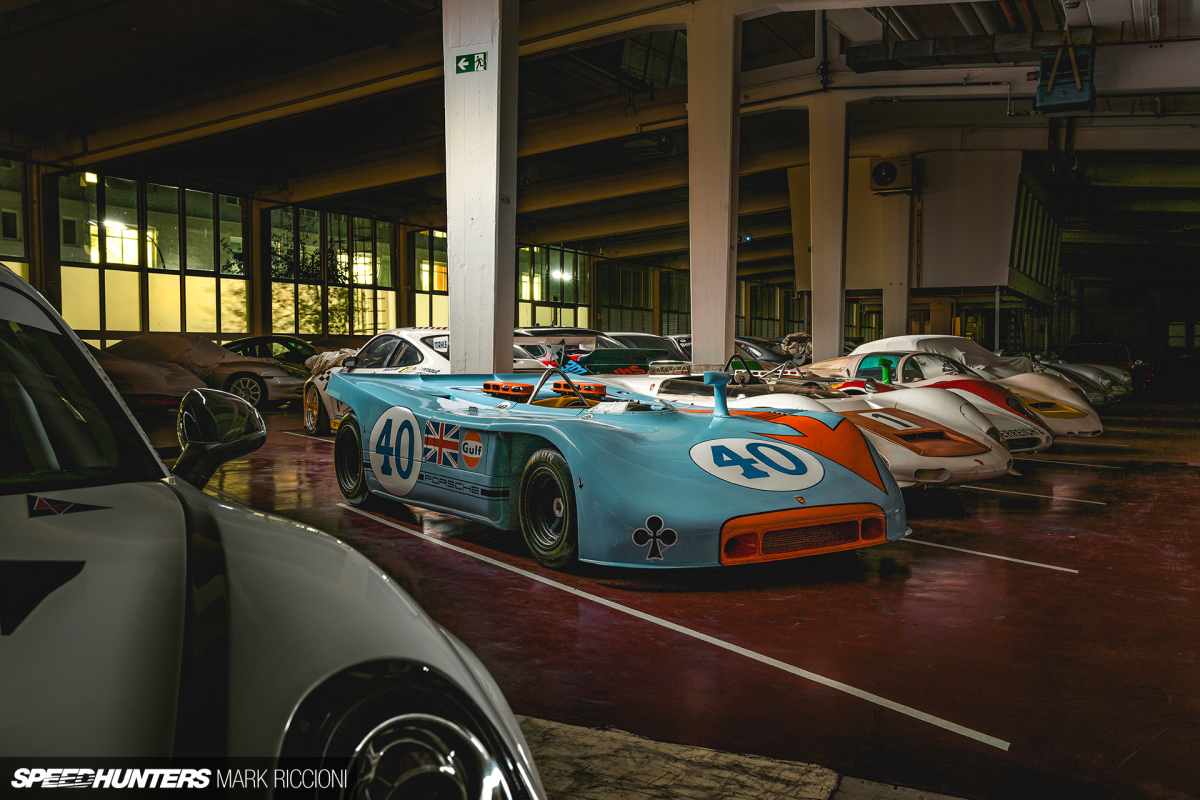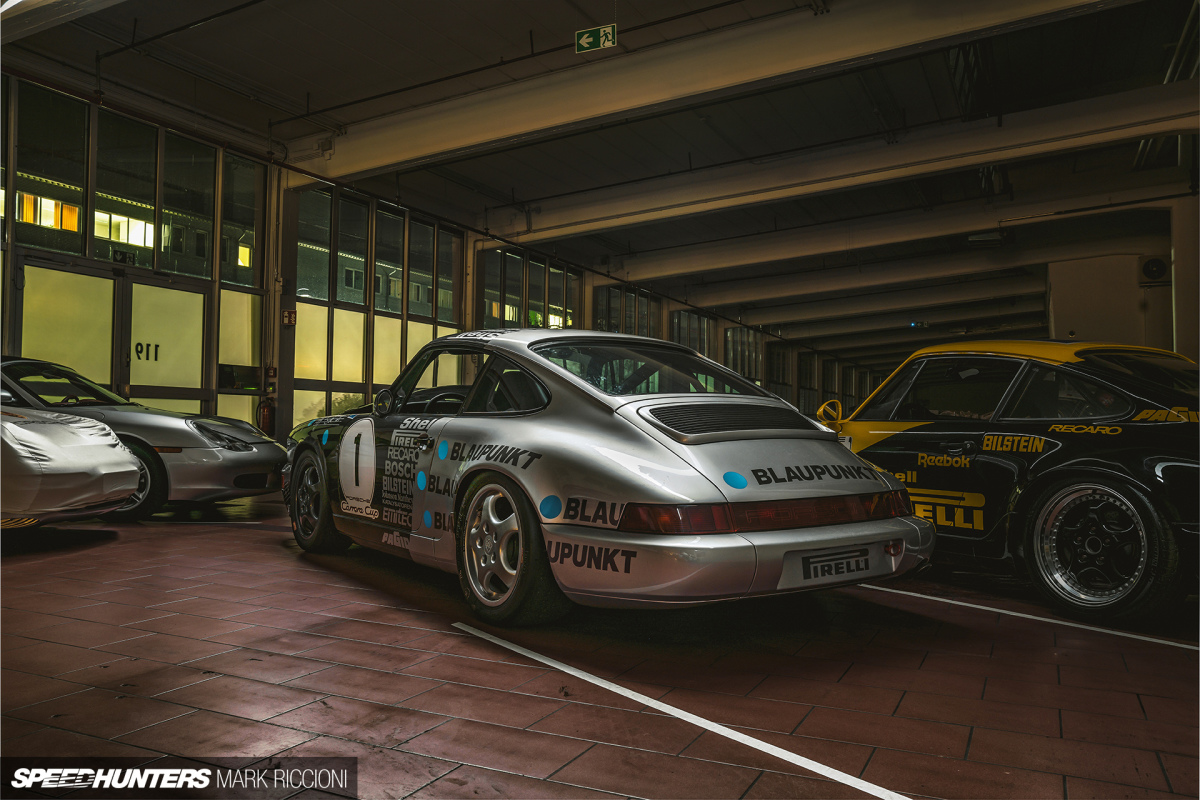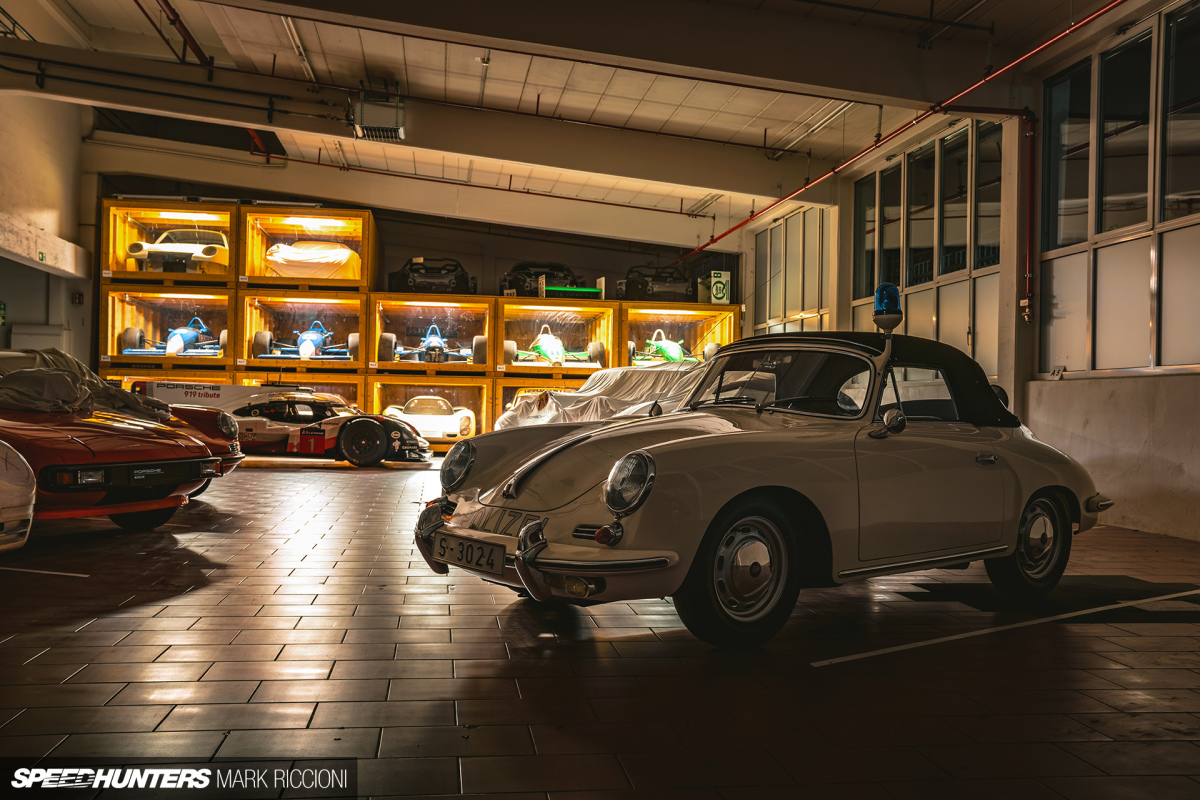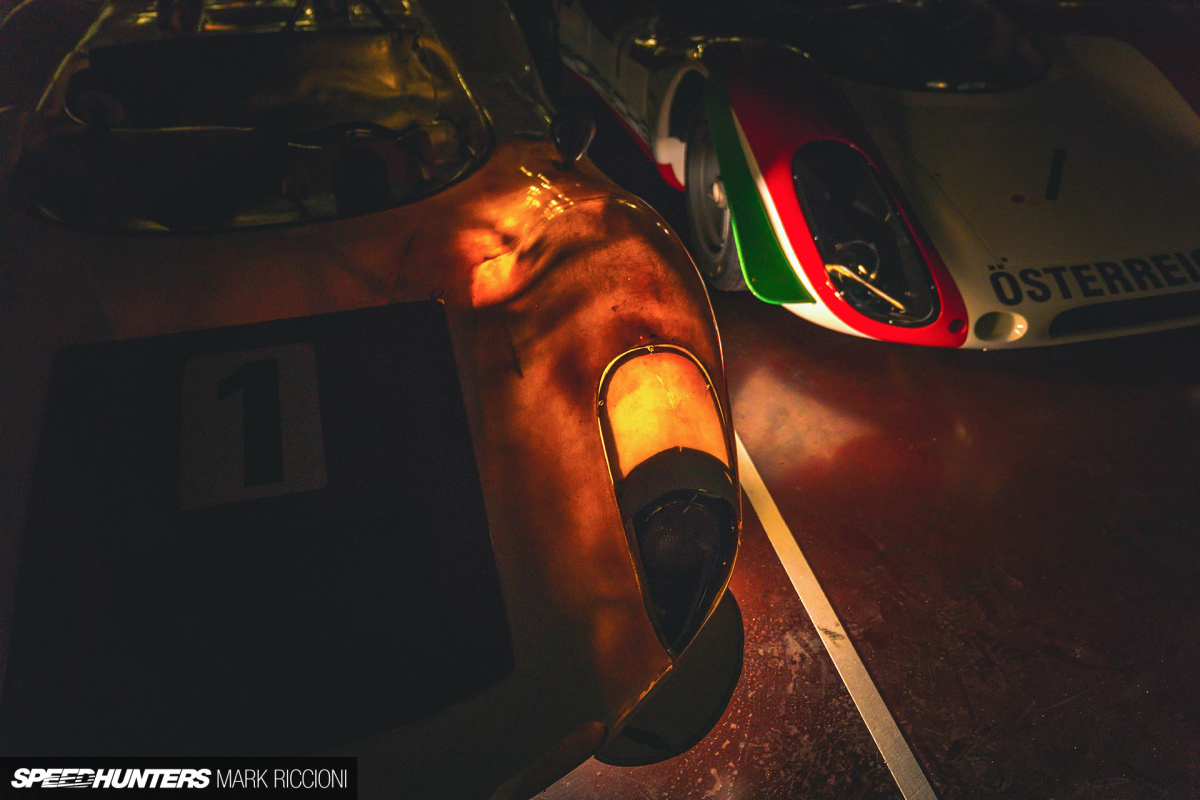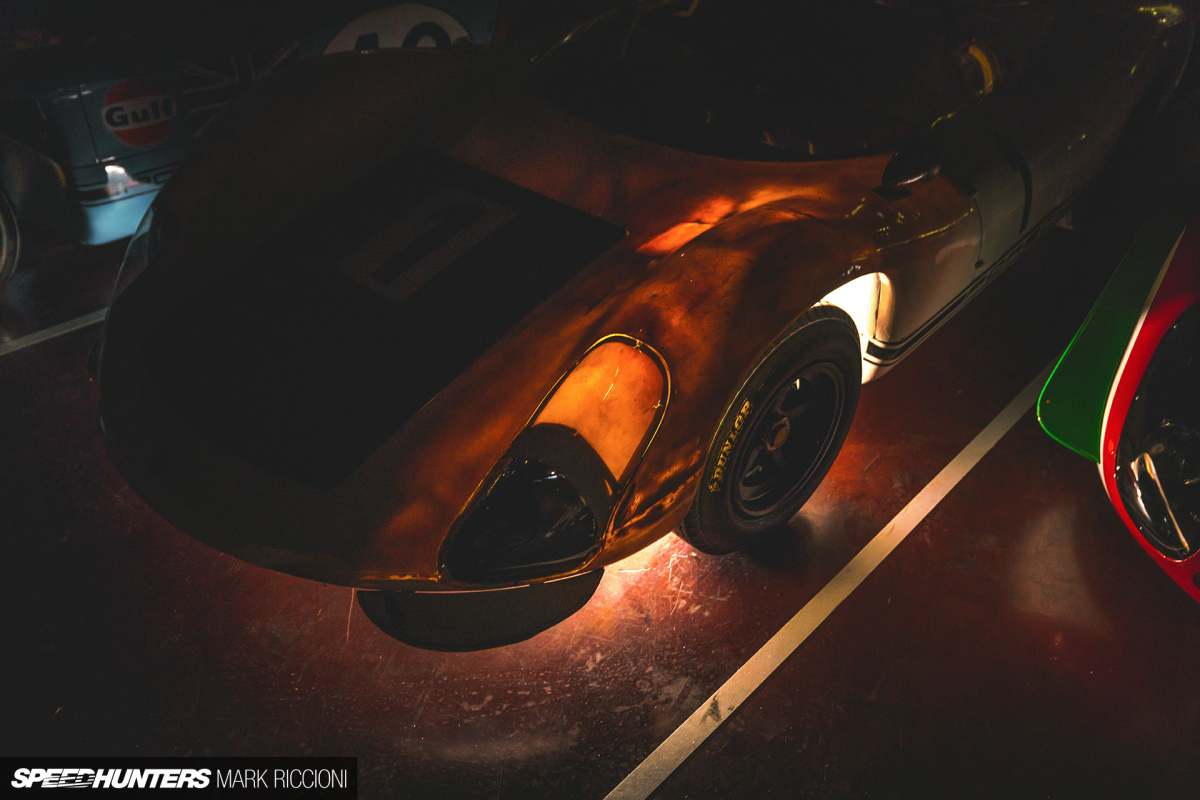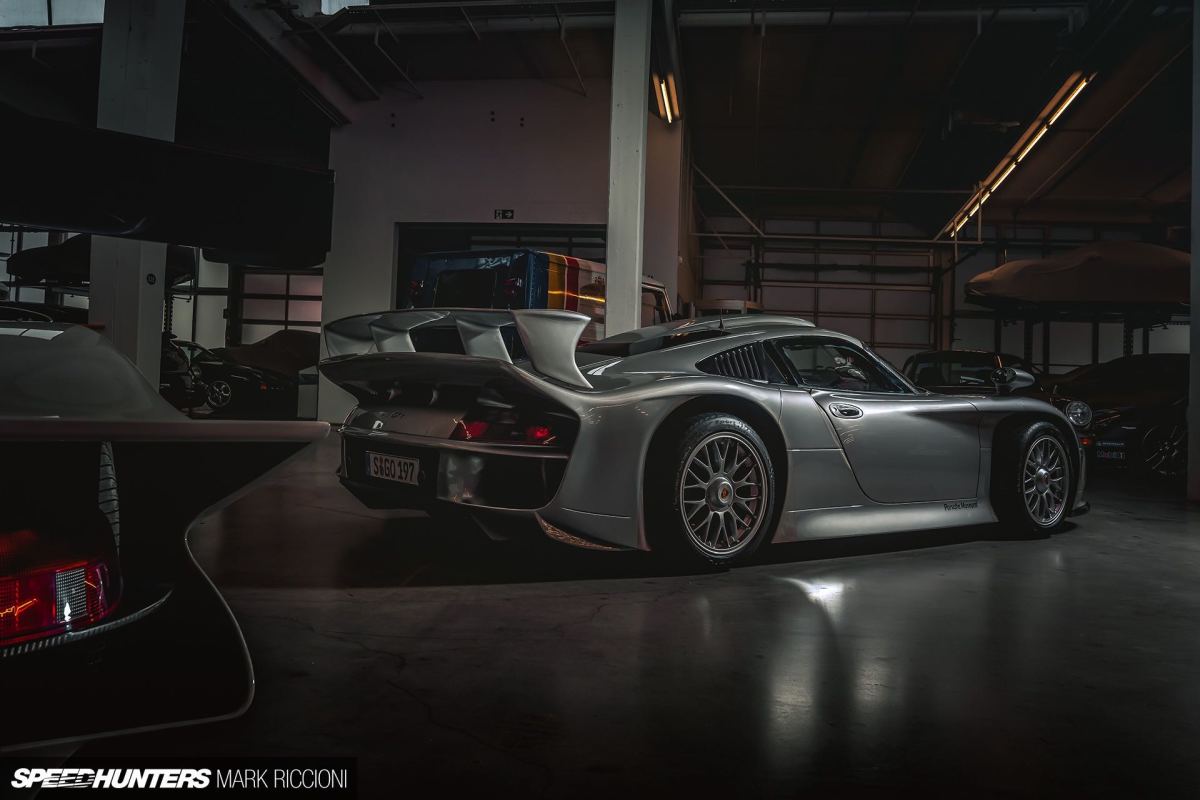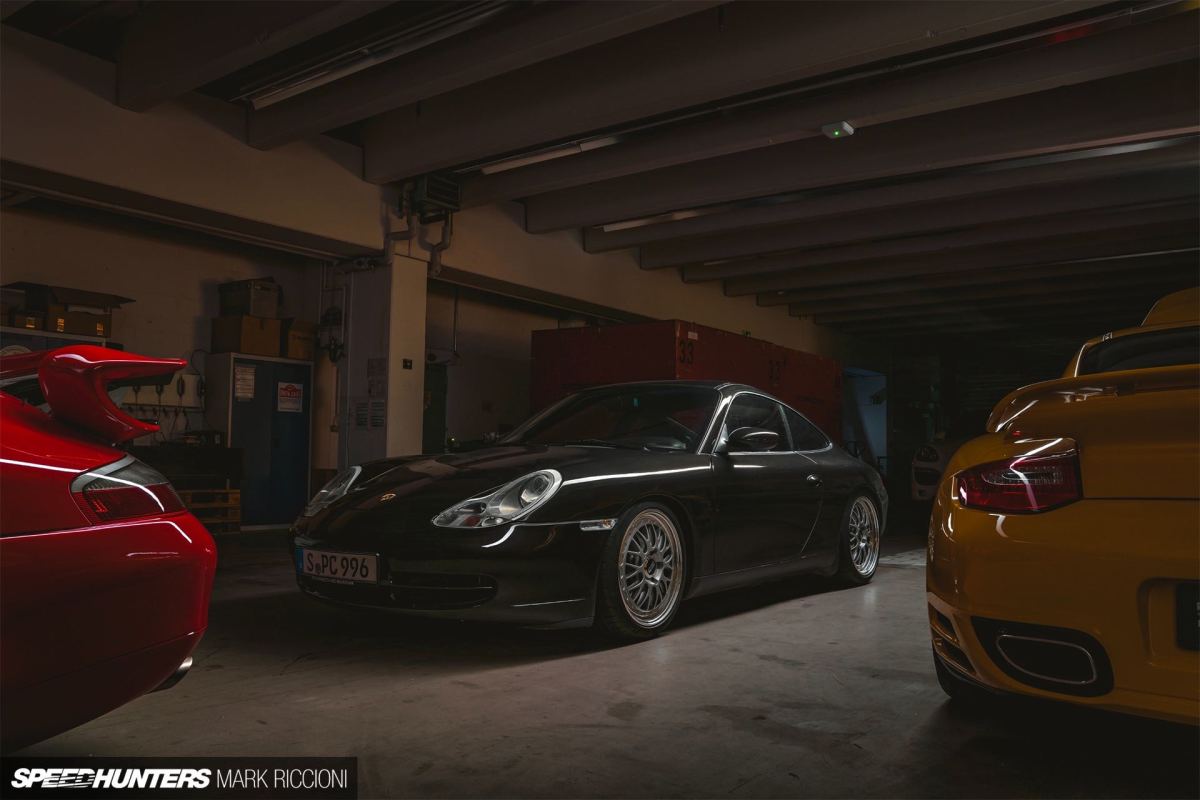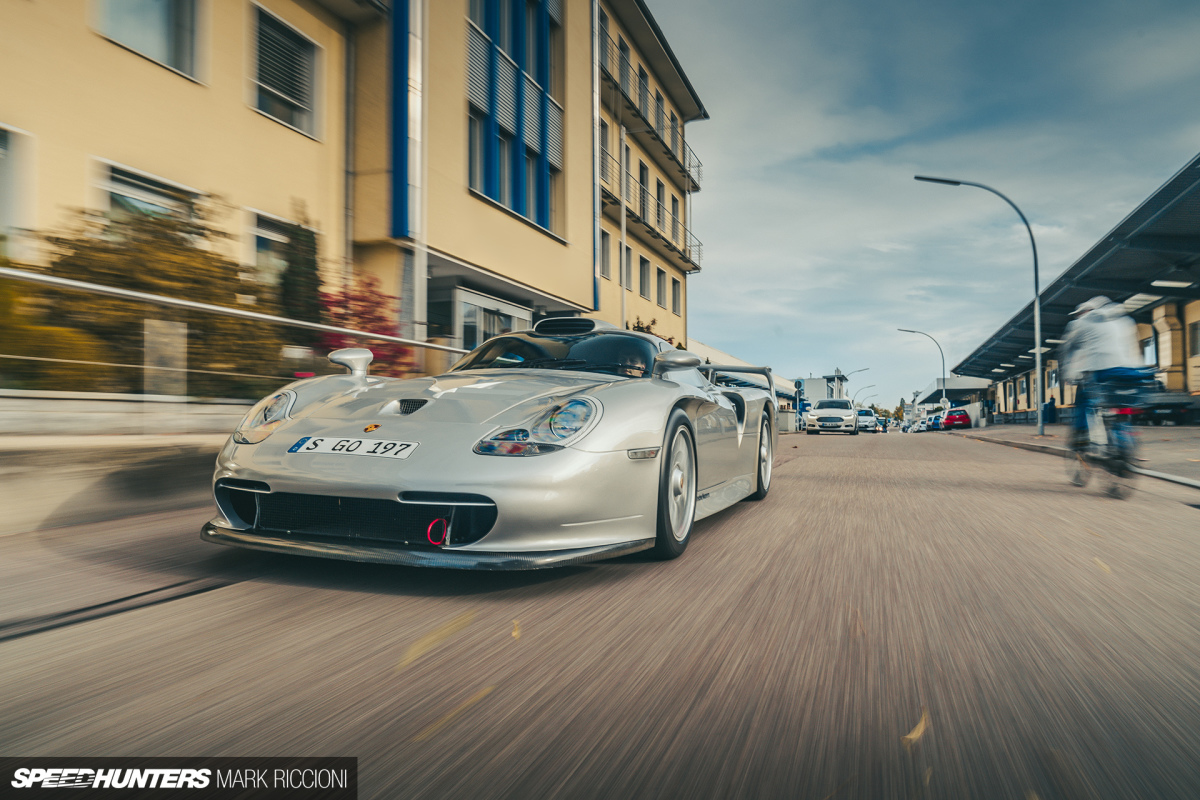cybermad
Clan Leader
Como dicen Speedhunters, el almacén no tan secreto 
http://www.speedhunters.com/2019/12/the-not-so-secret-porsche-museum-storage-facility/
The (Not So) Secret Porsche Museum Storage Facility
25TH DECEMBER 2019
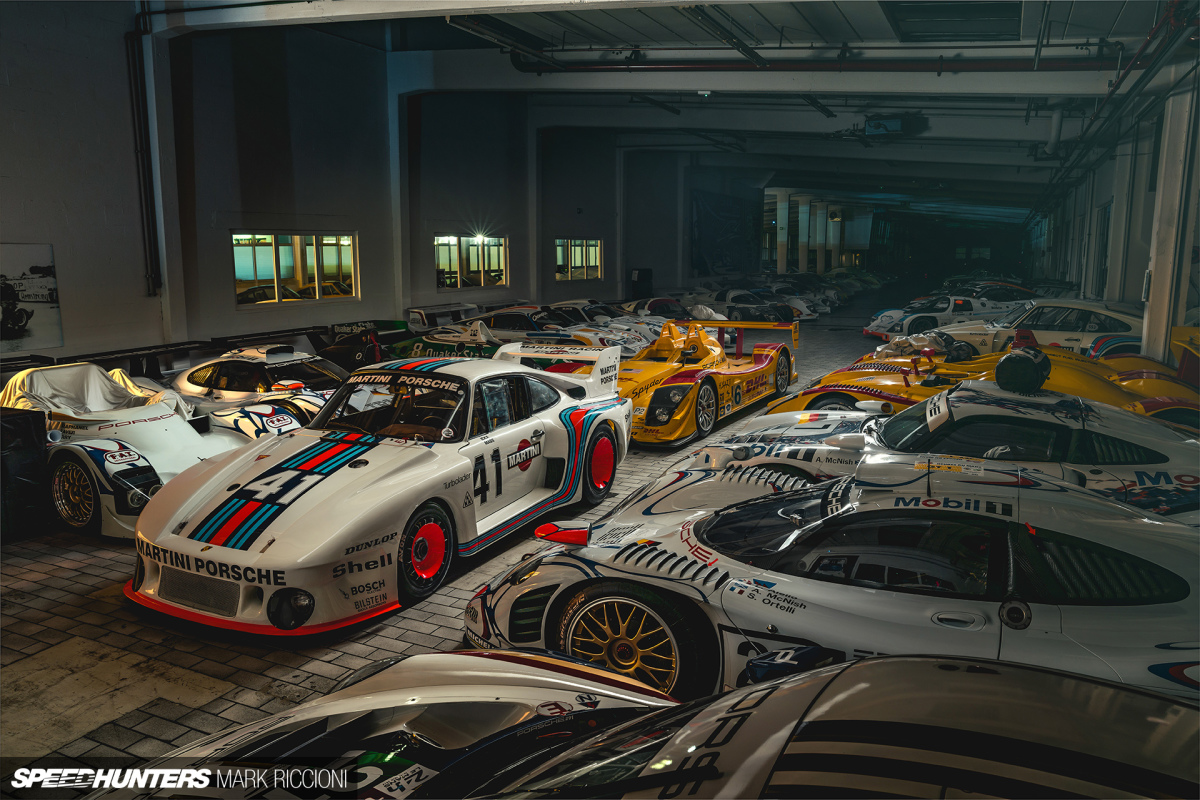
Welcome to the place where Porsche keeps their precious treasure.
We’ve all been guilty of writing a click-bait title or two here at Speedhunters. Often, and quite rightly so, this is soon followed by a good flaming in the comments section. So let me level with you – this isn’t the first story about this covert place. Far from it. A quick Google search of ‘Porsche Secret Storage’ brings up a bunch of results, with Top Gear covering this way back in 2012. Therefore, it’s not really a secret, hence the title. But, this incredible garage on steroids is still hush-hush with the Porsche people at Stuttgart.
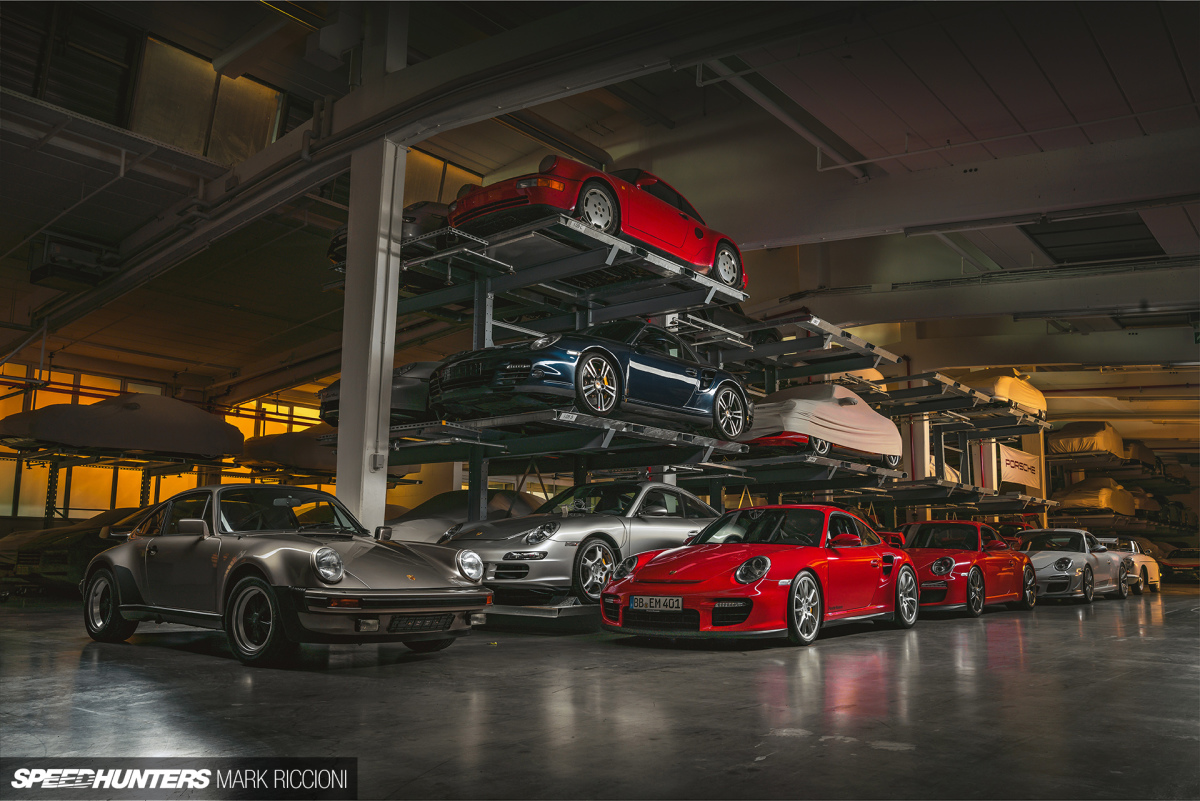
In other news, it’s not the first time I’ve written this feature. Truth be told, yesterday at 4:00am, I thought I’d done a half-decent job of sharing this experience via the medium of 1,200 words, or so. And then, as I finished the story and added a few notes requesting some extra photos here and there from Mr. Riccioni, I clicked ‘Save’ and WordPress laughed at me. Are you sure? I think the message said.
My heart sank. For the first time in as long as I can remember, I made the fatal mistake of not cutting and pasting my rabble into Word and saving down versions as I worked. A rookie error of working in a ‘logged-out’ tab, means I am back here again tapping on the keys of my laptop. What on earth has this got to with Porsche’s mind-blowing storage facility, you may ask?
Three words: Organisation. Organisation. Organisation.
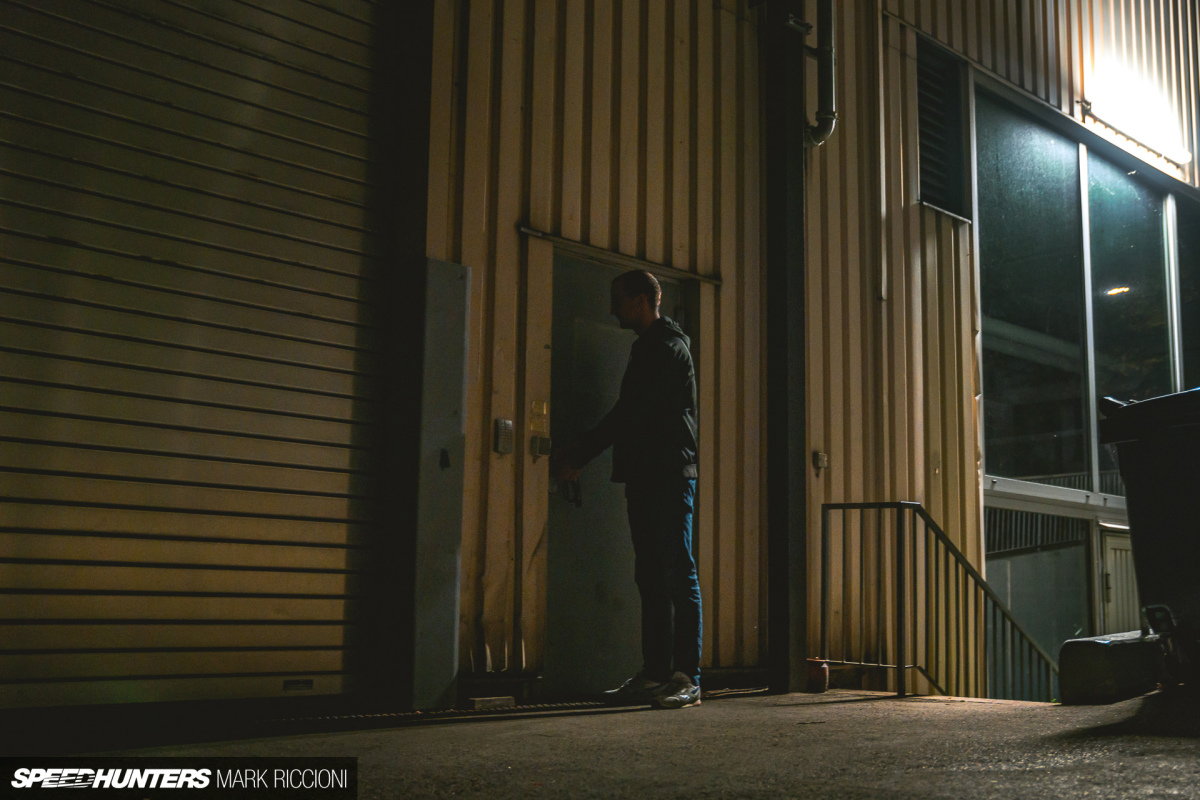
The man holding the key to this undisclosed door is called Benjamin Marjanac, or ‘Beny’ to his friends. Call me fickle, but today Beny’s most definitely my friend. And, having spent a large part of his life organising what’s behind this door, it means we have a pretty good tour guide. Beny’s boss, Alexander E. Klein, has given us the green light to photograph this absolute stash of Porsche history in peace and quiet, at night.
I say ‘us’, but what I really mean is ‘Mark’. If I was left to take the photos, then I’d likely leave the memory cards in a rental car, or in that bit where the safety cards are kept onboard the airplane. Speaking from experience here. Lucky, then, that Beny, Alexander and Mark are all far more coordinated than I am.
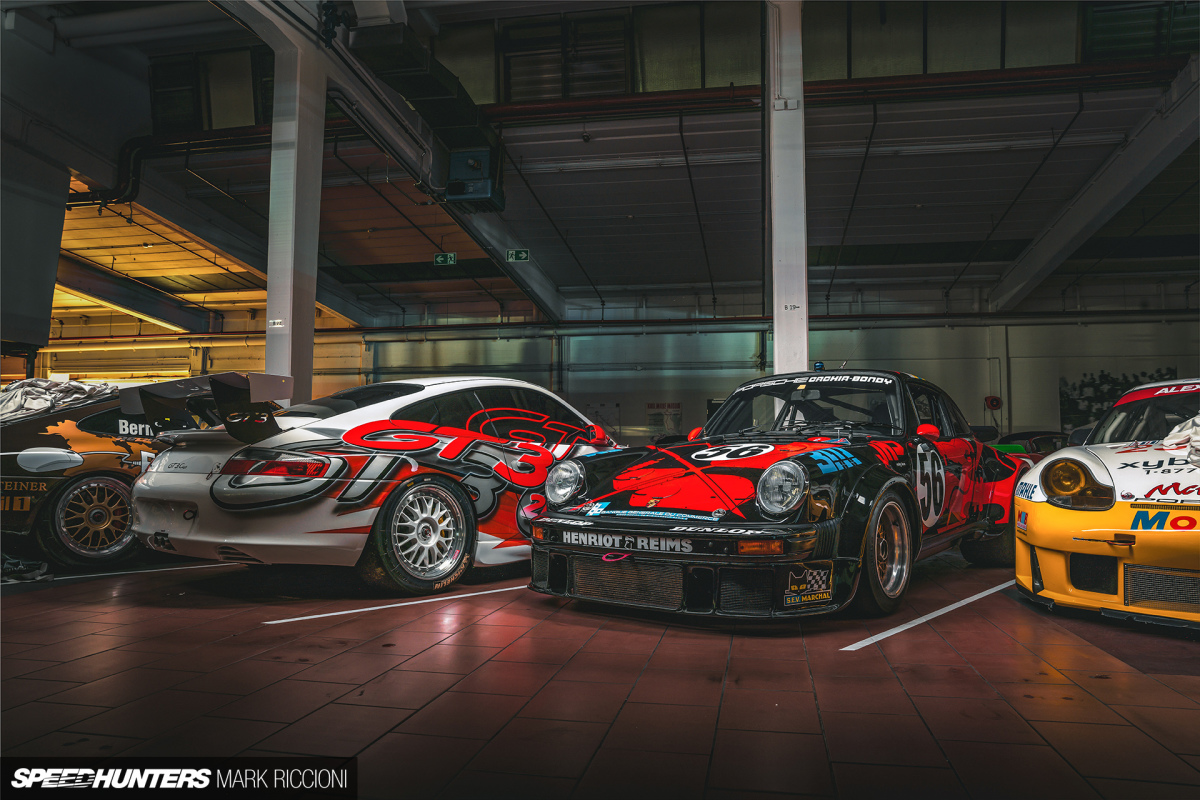
For just over seven years, Porsche has had this storage facility. Before then, the cars were split across various different locations throughout Stuttgart. As well as this, there were thousands of parts that required indexing. Alexander and Beny worked together with various teams to make all of the cars in the collection working and worthy of being in the Porsche Museum. Not only do they run, but they are able to be driven, and the cars can be taken anywhere in the world, sometimes with just a few hours’ notice. This is a truly working collection.
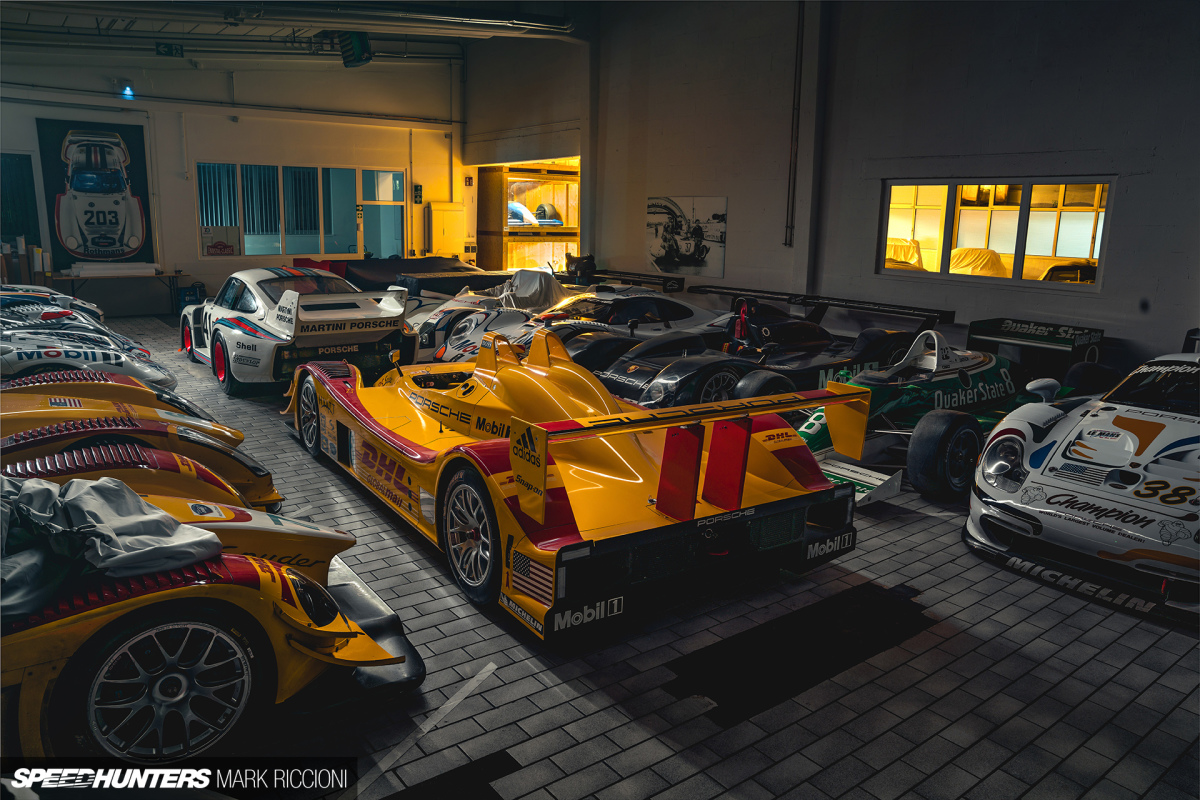
All of this stuff isn’t just for looking at; Porsche philosophy is that things should be functional, correct and authentic.
Our midnight guide explains, “Of course, the museum itself is about the cars and also the historic information, but these cars have to be used, otherwise they cease to be a car and driving is what we love more than anything else.” Core, this is music to our ears. People actually driving rare cars as they were intended. This is what it’s all about.
“About 20% are registered and ready to go, which is no mean feat when you consider that a large number of the cars are actually dedicated for competition use, so not road legal.” As Beny tells us this, I am standing next to our Technical Editor, Ryan, in a sea of race cars, and he’s just silent. A proper pinch yourself moment, indeed.
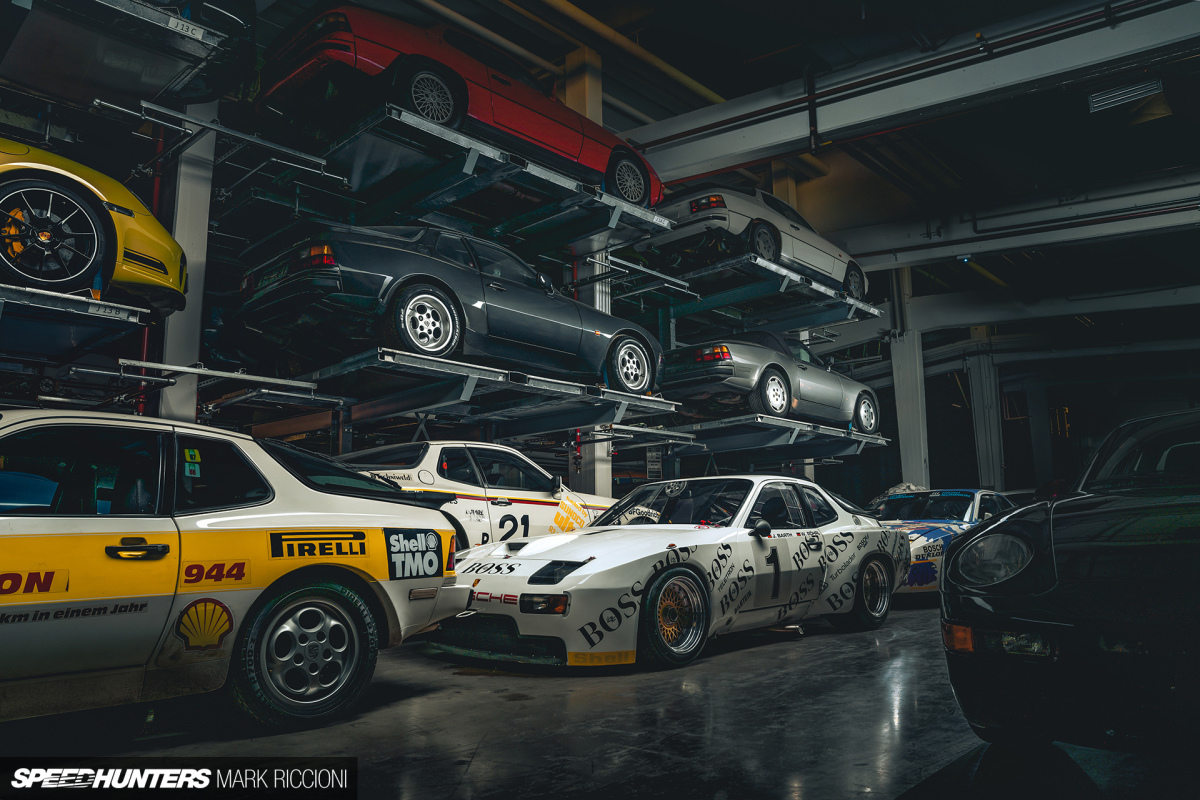
Speaking of race cars, this is a very special 924 GTP. The reason it’s unique is because GTP stands for ‘GT Prototype’ and this particular 924, piloted by none other than Walter Röhrl, sports a 944 Turbo motor.
Incidentally, I was lucky enough to see this with Ry in 2013 at the Porsche Museum. If you live in Europe, then a drive to the museum itself is well worth it. Less than 10km away you’ll also find the Mercedes-Benz Museum. Both are places that we’ve covered before on Speedhunters, and you can spend half an hour there and just get coffee if you’re on a time-sensitive road trip. Or, make a day or it and hit up both places over the course of a day. Lunch at the Porsche museum is pretty good, too.
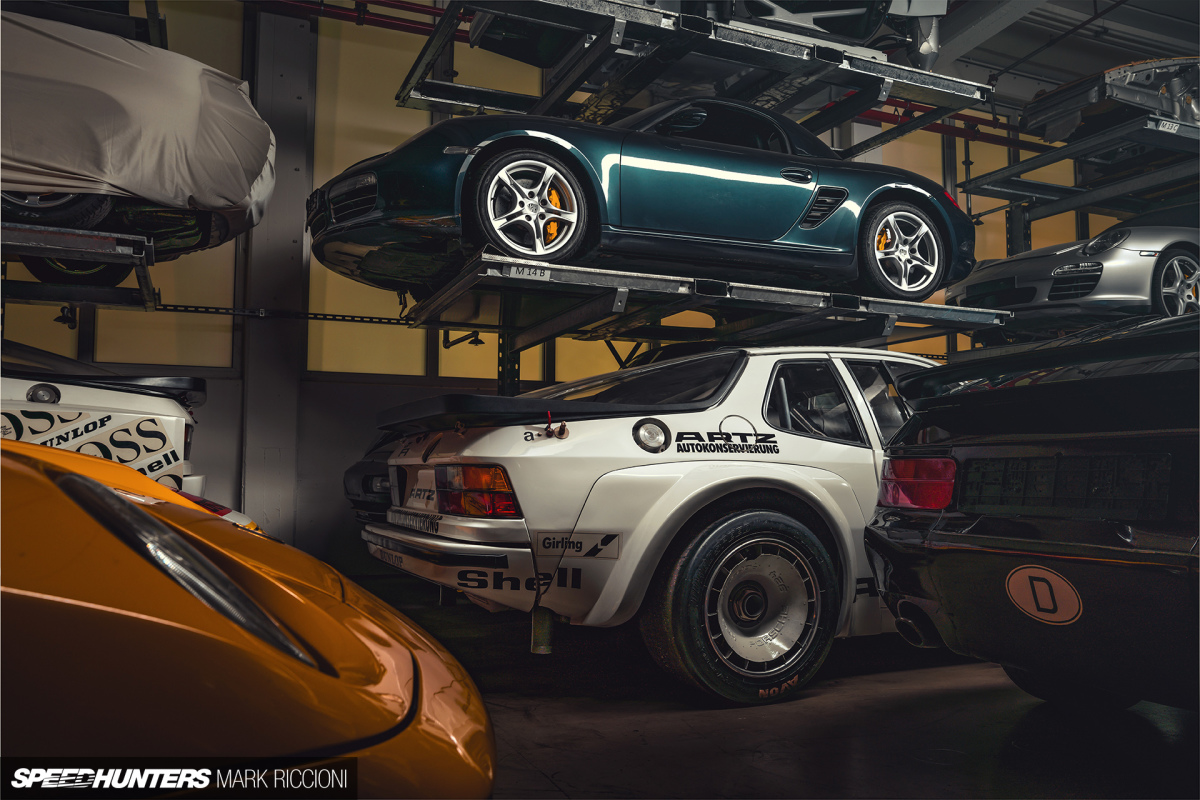
If you’re a wheel geek, then this place really is heaven. Take a look at these turbo fans and you’ll see that these are made by Porsche. Casually sitting to the right of the 924 is 968 chassis #1. Maybe we will get back and make a case study of this car in the summer of 2020. I really wish I’d bought a 968 Clubsport back when they were 10 grand. Anyway, I digress. It’s easy to fall in love with a car and sneak off to do a quick eBay search, only to realise you can’t afford what you’re dreaming about. Must. Stay. Focused.
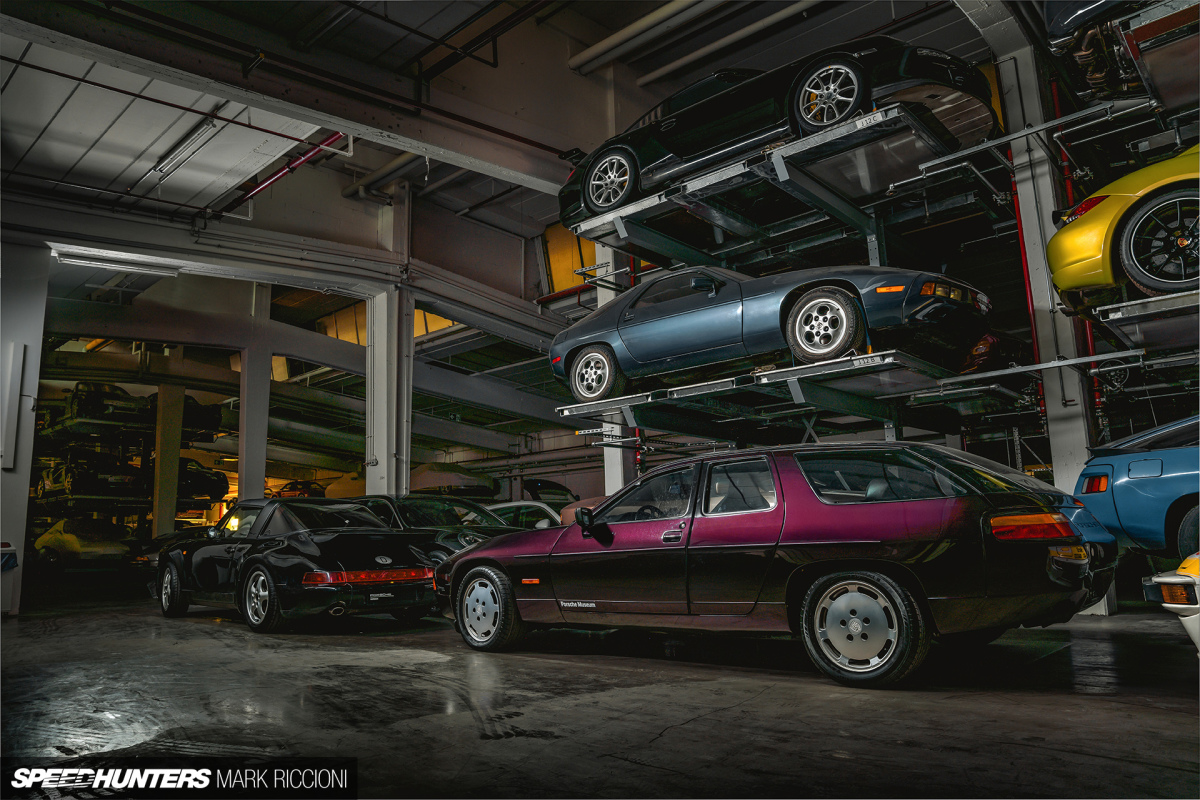
No, your eyes are not deceiving you. That’s a 928 four-door. The correct name for this is 928 H50, and it’s one of many attempts that Porsche made to create a sporty family car.
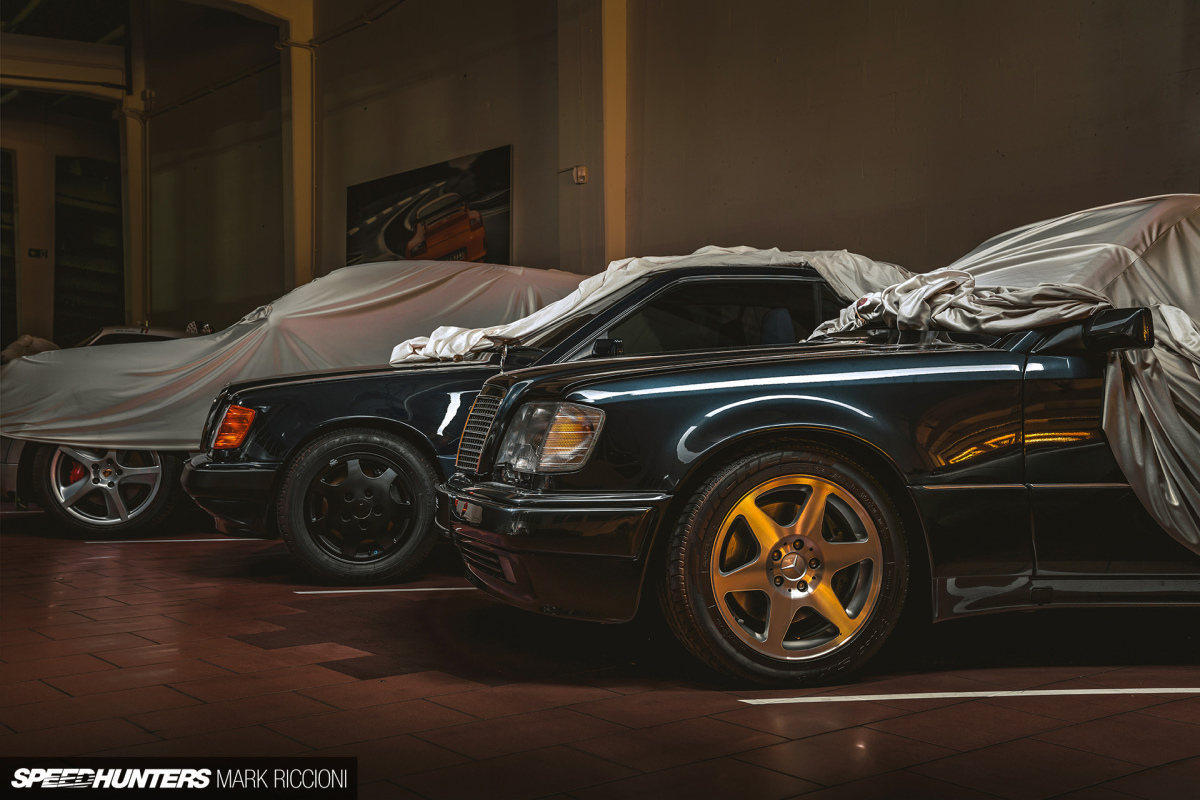
In the 1990s, this kind of came true in the form of the W124 500E/E500. If you look at the W124 in the background, you might notice that it has D90 wheels. This has a special 989 engine which is actually an eight-cylinder based on an IndyCar powerplant. Yes, Porsche engineers wanted to make a family sedan using this motor. Absolute madness as far as the eye can see.
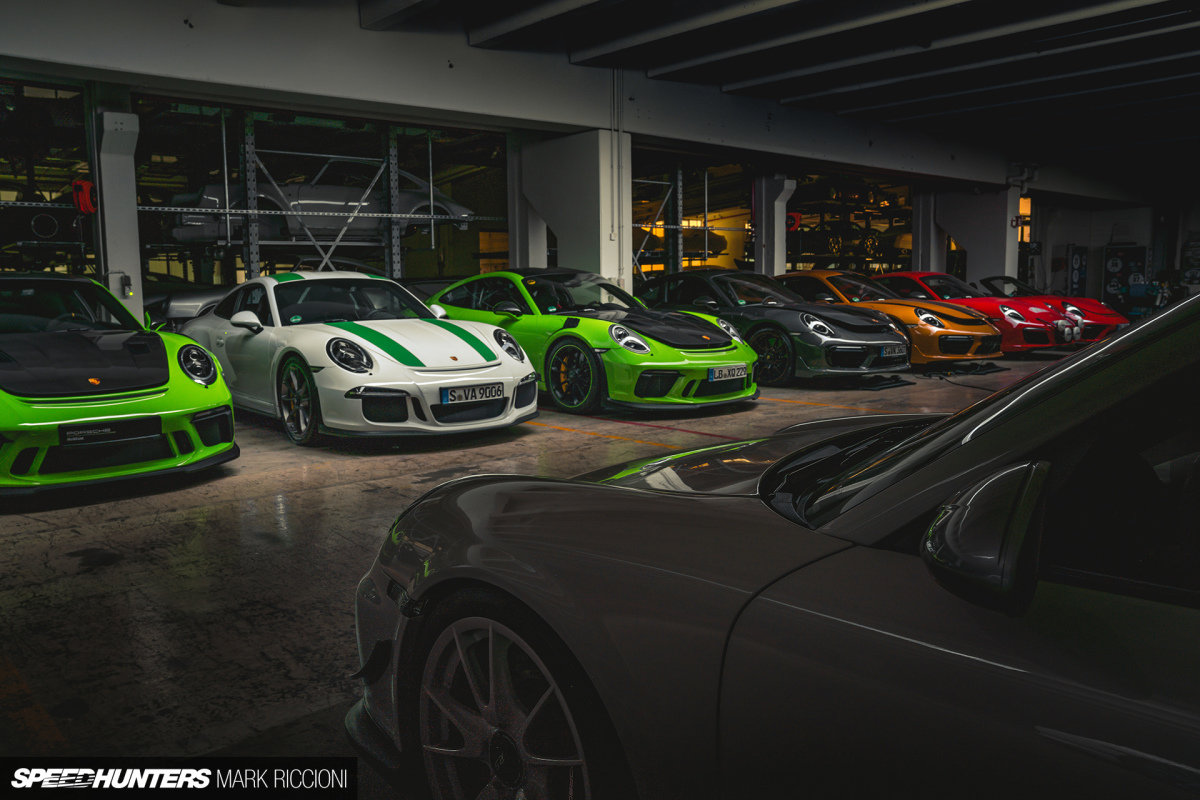
If you’re a supercar spotter, then this section of the facility is a perfect opportunity to test out your knowledge of Porsche colours.
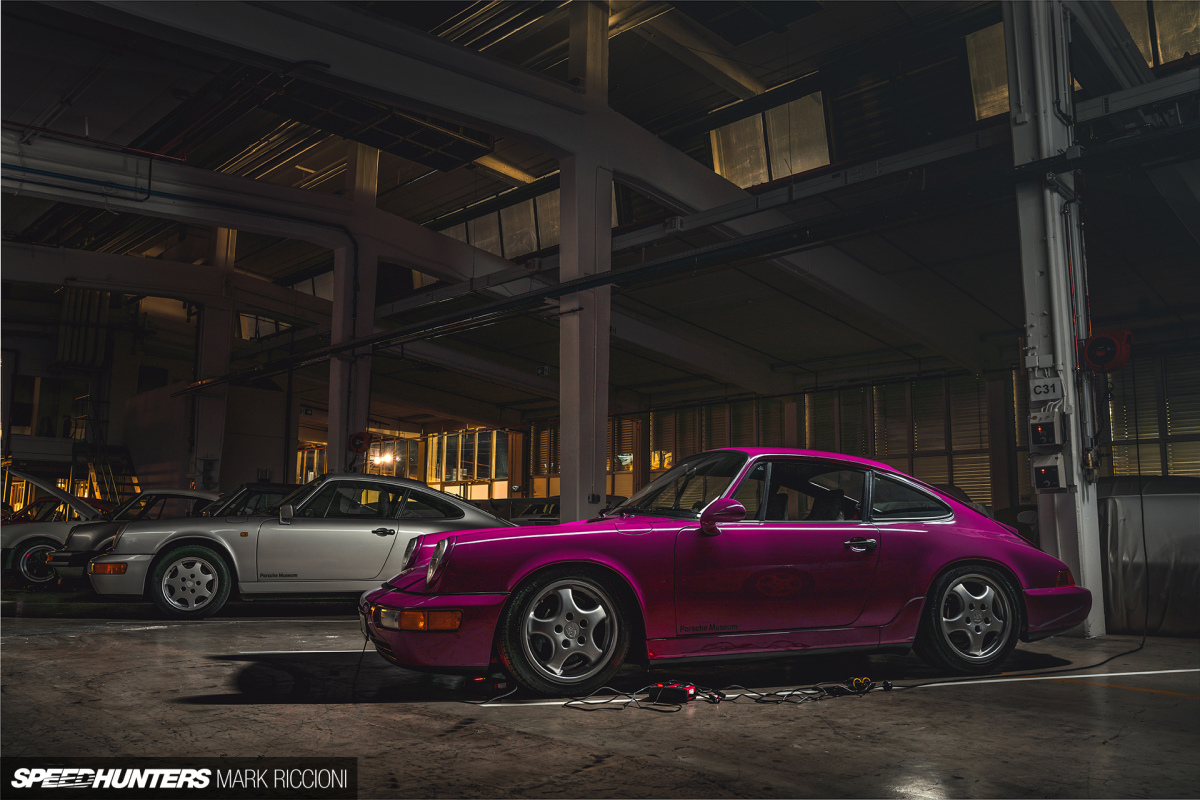
‘Oh look, another 911!’ I hear you cry. Hold your horses, everything in here is special and has a story.
This was one of the original press cars. If you check the chassis number, then it shows that it is actually a Cup car. When the team behind the Carrera RS started out with the idea, they took a Cup car, pulled it to pieces, and made their vision of a road-going race car. This is the car that Mr. Roland Kussmaul and his team put together and spawned the concept for the 996 GT3. Treasure, indeed.
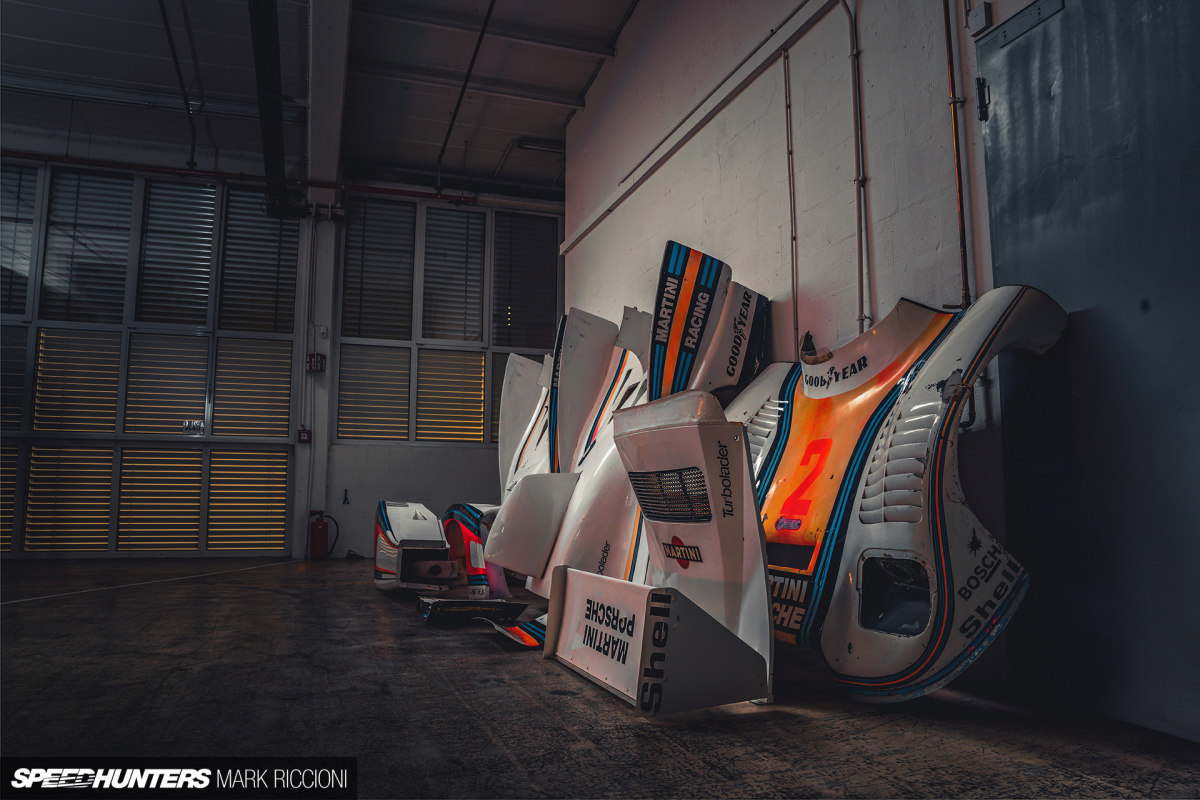
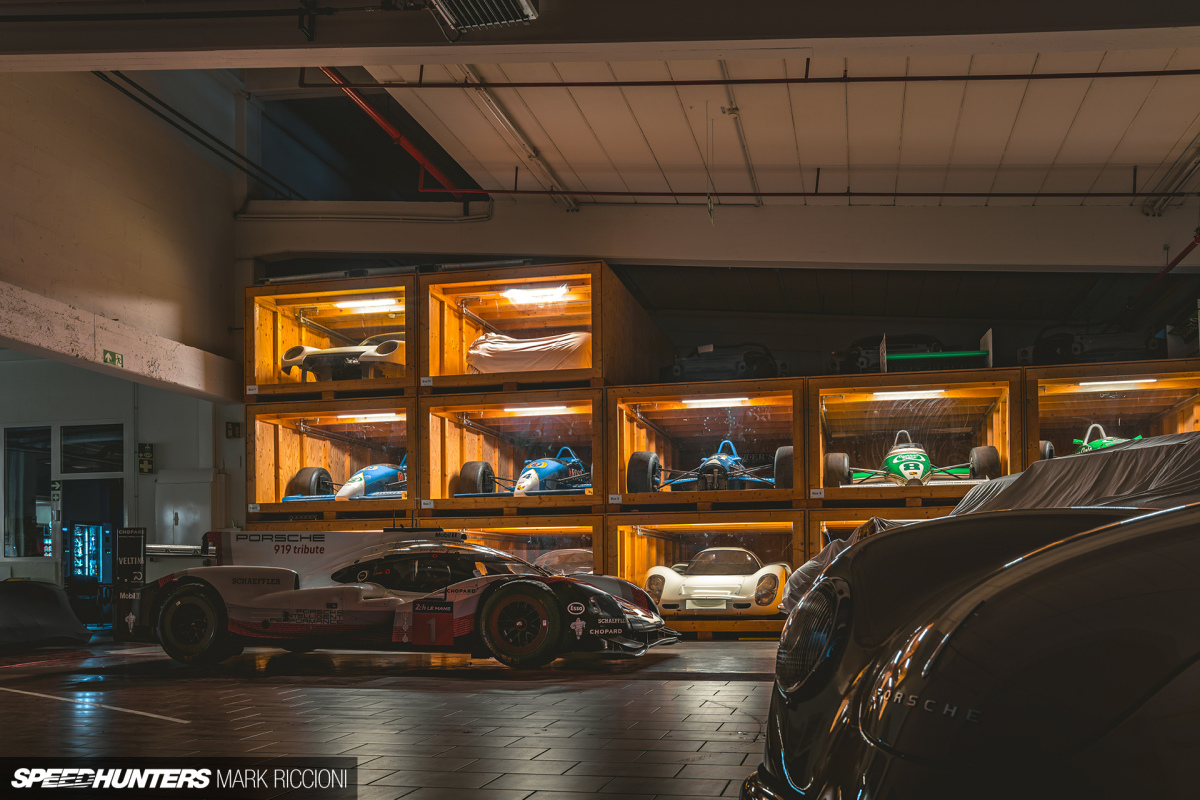
Never forget your roots. The 356 in the foreground is an original car made in Gmund back in 1949, whilst the 919 Evo is the famous Nürburgring lap record-smashing machine from 2018. You don’t need me to tell you about either, but what I thought was cool, as Mark was setting this shot up, is that there’s almost 70 years in between the two cars, making them the bookends of Porsche’s passion for sports cars and racing.
Anyway, I am getting distracted by dreams again. The reason why the cars are in the boxes is – and this is very practical and very German – because they fit in them. So it’s simply a very efficient way to store these vehicles. In fact, Porsche have designed their very own Linde forklift, which is used throughout the facility. That’s the kind of OCD level I am sure you can get on board with. I’ve seen Blake Jones’ Project NSX updates and I recon this is the sort of stuff that he goes to bed dreaming about!

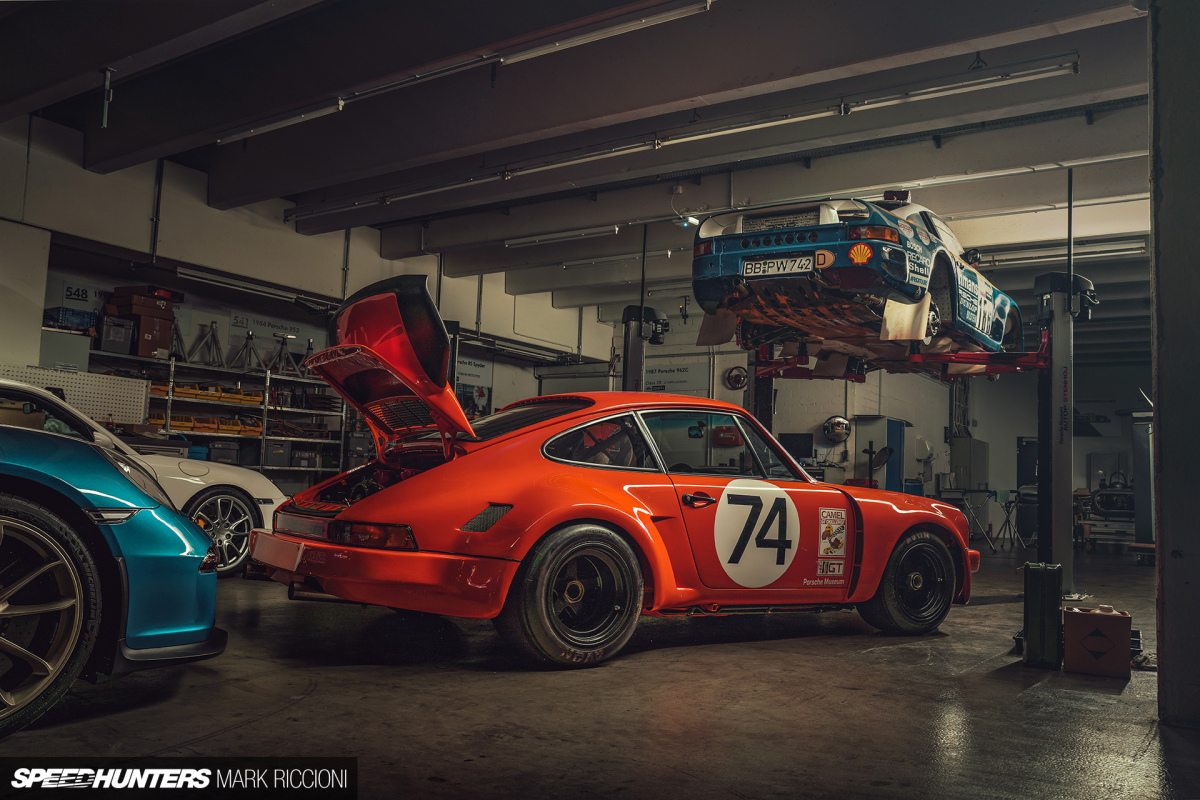

http://www.speedhunters.com/2019/12/the-not-so-secret-porsche-museum-storage-facility/
The (Not So) Secret Porsche Museum Storage Facility
25TH DECEMBER 2019

Welcome to the place where Porsche keeps their precious treasure.
We’ve all been guilty of writing a click-bait title or two here at Speedhunters. Often, and quite rightly so, this is soon followed by a good flaming in the comments section. So let me level with you – this isn’t the first story about this covert place. Far from it. A quick Google search of ‘Porsche Secret Storage’ brings up a bunch of results, with Top Gear covering this way back in 2012. Therefore, it’s not really a secret, hence the title. But, this incredible garage on steroids is still hush-hush with the Porsche people at Stuttgart.

In other news, it’s not the first time I’ve written this feature. Truth be told, yesterday at 4:00am, I thought I’d done a half-decent job of sharing this experience via the medium of 1,200 words, or so. And then, as I finished the story and added a few notes requesting some extra photos here and there from Mr. Riccioni, I clicked ‘Save’ and WordPress laughed at me. Are you sure? I think the message said.
My heart sank. For the first time in as long as I can remember, I made the fatal mistake of not cutting and pasting my rabble into Word and saving down versions as I worked. A rookie error of working in a ‘logged-out’ tab, means I am back here again tapping on the keys of my laptop. What on earth has this got to with Porsche’s mind-blowing storage facility, you may ask?
Three words: Organisation. Organisation. Organisation.

The man holding the key to this undisclosed door is called Benjamin Marjanac, or ‘Beny’ to his friends. Call me fickle, but today Beny’s most definitely my friend. And, having spent a large part of his life organising what’s behind this door, it means we have a pretty good tour guide. Beny’s boss, Alexander E. Klein, has given us the green light to photograph this absolute stash of Porsche history in peace and quiet, at night.
I say ‘us’, but what I really mean is ‘Mark’. If I was left to take the photos, then I’d likely leave the memory cards in a rental car, or in that bit where the safety cards are kept onboard the airplane. Speaking from experience here. Lucky, then, that Beny, Alexander and Mark are all far more coordinated than I am.

For just over seven years, Porsche has had this storage facility. Before then, the cars were split across various different locations throughout Stuttgart. As well as this, there were thousands of parts that required indexing. Alexander and Beny worked together with various teams to make all of the cars in the collection working and worthy of being in the Porsche Museum. Not only do they run, but they are able to be driven, and the cars can be taken anywhere in the world, sometimes with just a few hours’ notice. This is a truly working collection.

All of this stuff isn’t just for looking at; Porsche philosophy is that things should be functional, correct and authentic.
Our midnight guide explains, “Of course, the museum itself is about the cars and also the historic information, but these cars have to be used, otherwise they cease to be a car and driving is what we love more than anything else.” Core, this is music to our ears. People actually driving rare cars as they were intended. This is what it’s all about.
“About 20% are registered and ready to go, which is no mean feat when you consider that a large number of the cars are actually dedicated for competition use, so not road legal.” As Beny tells us this, I am standing next to our Technical Editor, Ryan, in a sea of race cars, and he’s just silent. A proper pinch yourself moment, indeed.

Speaking of race cars, this is a very special 924 GTP. The reason it’s unique is because GTP stands for ‘GT Prototype’ and this particular 924, piloted by none other than Walter Röhrl, sports a 944 Turbo motor.
Incidentally, I was lucky enough to see this with Ry in 2013 at the Porsche Museum. If you live in Europe, then a drive to the museum itself is well worth it. Less than 10km away you’ll also find the Mercedes-Benz Museum. Both are places that we’ve covered before on Speedhunters, and you can spend half an hour there and just get coffee if you’re on a time-sensitive road trip. Or, make a day or it and hit up both places over the course of a day. Lunch at the Porsche museum is pretty good, too.

If you’re a wheel geek, then this place really is heaven. Take a look at these turbo fans and you’ll see that these are made by Porsche. Casually sitting to the right of the 924 is 968 chassis #1. Maybe we will get back and make a case study of this car in the summer of 2020. I really wish I’d bought a 968 Clubsport back when they were 10 grand. Anyway, I digress. It’s easy to fall in love with a car and sneak off to do a quick eBay search, only to realise you can’t afford what you’re dreaming about. Must. Stay. Focused.

No, your eyes are not deceiving you. That’s a 928 four-door. The correct name for this is 928 H50, and it’s one of many attempts that Porsche made to create a sporty family car.

In the 1990s, this kind of came true in the form of the W124 500E/E500. If you look at the W124 in the background, you might notice that it has D90 wheels. This has a special 989 engine which is actually an eight-cylinder based on an IndyCar powerplant. Yes, Porsche engineers wanted to make a family sedan using this motor. Absolute madness as far as the eye can see.

If you’re a supercar spotter, then this section of the facility is a perfect opportunity to test out your knowledge of Porsche colours.

‘Oh look, another 911!’ I hear you cry. Hold your horses, everything in here is special and has a story.
This was one of the original press cars. If you check the chassis number, then it shows that it is actually a Cup car. When the team behind the Carrera RS started out with the idea, they took a Cup car, pulled it to pieces, and made their vision of a road-going race car. This is the car that Mr. Roland Kussmaul and his team put together and spawned the concept for the 996 GT3. Treasure, indeed.


Never forget your roots. The 356 in the foreground is an original car made in Gmund back in 1949, whilst the 919 Evo is the famous Nürburgring lap record-smashing machine from 2018. You don’t need me to tell you about either, but what I thought was cool, as Mark was setting this shot up, is that there’s almost 70 years in between the two cars, making them the bookends of Porsche’s passion for sports cars and racing.
Anyway, I am getting distracted by dreams again. The reason why the cars are in the boxes is – and this is very practical and very German – because they fit in them. So it’s simply a very efficient way to store these vehicles. In fact, Porsche have designed their very own Linde forklift, which is used throughout the facility. That’s the kind of OCD level I am sure you can get on board with. I’ve seen Blake Jones’ Project NSX updates and I recon this is the sort of stuff that he goes to bed dreaming about!


Última edición:


